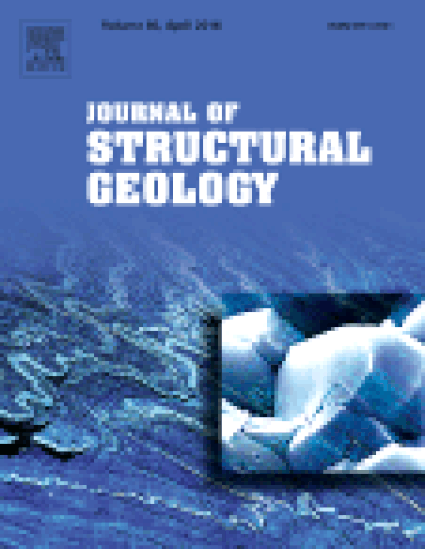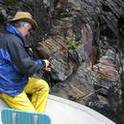
Article
Geometry, Microstructures, and Magnetic Fabrics of Kink Bands in the Darrington Phyllite, Northwestern Washington, USA: Processes within Fixed-hinge Kinking
Journal of Structual Geology
(2011)
Abstract
Field, thin section, and magnetic fabric analyses of monoclinal, contractional kink bands in the Darrington Phyllite of northwestern Washington, USA, provide evidence of kinematic evolution and microstructural processes during kinking. Relationships among internal, external, and rotation angles of kink bands suggest that rotation was a primary mechanism of kinking, and a significant number of kink bands deviate from the “ideal” kink band geometry (equal internal and external kink angles). Dilation spaces (voids) filled with unrecrystallized quartz and/or calcite inside kink bands and along the boundaries are commonly observed in kink bands with unequal kink angles. Evidence for localized interlayer slip inside kink bands includes mica grains protruding into the hinge voids and stair-step geometry of the voids. Interlayer slip allowed for rotation of the internal foliation during kinking. Pressure solution is not ubiquitous inside kink bands from the study area; however, significant pressure solution is associated with “locked” kink bands (equal kink angles). A new approach using the anisotropy of magnetic susceptibility (AMS) shows that the magnetic fabric and susceptibility inside the kink bands differ more from the outside fabric than can be explained by simple rotation of the outside fabric into the kink attitudes. Combined, our observations suggest that fixed-hinge kinking operated at this location, and that veining, interlayer slip, and pressure solution were the dominant deformation mechanisms.
Keywords
- Kink band,
- Phyllite,
- Deformation,
- Magnetic anisotropy,
- Thin section,
- Microfabric
Disciplines
Publication Date
November, 2011
Publisher Statement
Published by Elsevier DOI: 10.1016/j.jsg.2011.08.010
Citation Information
Bernard A. Housen, Rachel E. Dunham, Juliet G. Crider, Russell F. Burmester, et al.. "Geometry, Microstructures, and Magnetic Fabrics of Kink Bands in the Darrington Phyllite, Northwestern Washington, USA: Processes within Fixed-hinge Kinking" Journal of Structual Geology Vol. 33 Iss. 11 (2011) Available at: http://works.bepress.com/russ_burmester/17/
